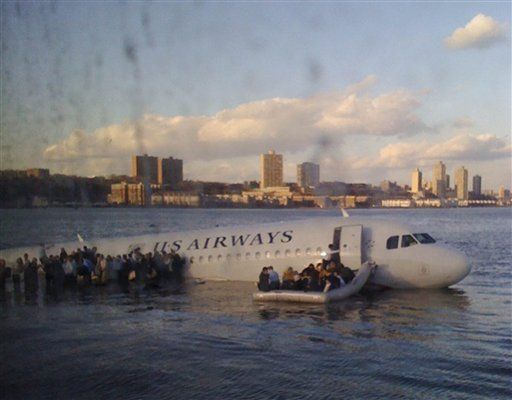
In the aftermath of the Miracle on the Hudson, Capt. Chesley Sullenberger told any reporter who would listen that credit for putting the US Airways Airbus A320 safely down on the river after losing both engines to bird strikes, was not his alone. His attempt to avoid being annointed savior of the flight was ineffective -- which is not surprising to anyone familiar with today's media culture. But Sullenberger's reserve notwithstanding, investigators are loath to lay credit or blame on any one factor in something as complex as an aviation accident.
William Langewiesche knows this. He has written about it in magazine articles and in his earlier book, "Inside the Sky." In his new book, "Fly by Wire the Geese, the Glide, the Miracle on the Hudson" he writes about the various factors that came into play on Flight 1549. But in detailing the creation and operation of the highly automated (fly by wire) Airbus A320 Capt. Sullenberger believes Langewiesche left readers with a mistaken impression that technology saved the day.
"Fly by Wire gives more credit than is due to how the airplane helped mitigate disaster that day." Sullenberger told me on Sunday.
Stirring the wrath of Capt. Sullenberger wasn't his intent, Langewiesche said. He was writing about an engineering design created more than twenty years ago that re-interpreted the cockpit and the way pilots would fly and became an integral part of the Airbus product line. Highly relevant was the motivation of the engineer, Bernard Ziegler, who wanted to make an airplane that would survive bad piloting.
"Ziegler was trying to make an airplane that was pilot-proof. The lowest ten percent is what he was designing this airplane for," Langewiesche told me speaking of the estimated percent of pilots who are not the right stuff. He was wondering if Sullenberger had interpreted his writing about Ziegler to be a statement of his own thinking. "Ziegler was very bombastic and combative and he was making a statement about pilots. I'm reporting what Ziegler says, not signing off on it."
In a lengthy interview, Sullenberger says "Fly by Wire" left him with the impression that automation is an effective substitute for pilot skill. It's the antithesis of what he wrote in his own book about Flight 1549, "Highest Duty: My Search for What Really Matters." In that book, which is largely a memoir, Sullenberger says preparation, anticipation and attention to the flight led to the happy outcome on January 15.
The question who or what is responsible for the miracle is specious. No disaster or near disaster has just one cause. These events lie at the end of an unbroken chain of events. In widening the circle to include all the contributing factors, the airplane's automation just doesn't make the cut, Sullenberger says. It is "greatly overstating to say" that the fly by wire system on his airplane mattered that day. It was a "minor contributing factor."
Langewiesche seemed genuinely baffled when I called to ask him about Capt. Sullenberger's reactions. Was media misrepresentation of his book to blame? Perhaps he said. Are pilots, even a generation later still sensitive about a flight control system rooted in a philosophy that airplanes should be "pilot-proof"? Langewiesche, himself a pilot, thinks not.
"Pilots are central to flight safety, of course they are," he said. "I'm not a proponent of fly by wire; I'm not an opponent of fly by wire. I don't think its role is critical, but it was functioning. It's part of the story."
The man versus machine debate is not new, nor is it close to resolution. There are those who believe more technology makes an airplane safer. Others argue while automation solves one set of problems it creates another. It's a point made in "Highest Duty" and one reason Sullenberger decided to speak up about Langewiesche's book.
Air accidents are examined in an attempt to discover what went wrong and what needs to be fixed and here's the flip side. Understanding why things go right can teach a lesson about future success. That's Capt. Sullenberger's point.
"Among the things that went right, you have to have a clear understanding of the degree to which each of these factors contributed, and they have to be weighed in an accurate way," he said.
Langewiesche echoed the sentiment.
The he said/he said between Langewiesche and Sullenberger is largely a media creation ignited by headlines like, "Saint Sully: How About Some Credit for Airbus?" and "Pilot was Cool but Plane was Cooler." Were the two men to get together for an Obama-esque beer summit, they would probably agree on most points and certainly agree on the last thing Langewiesche said to me about the events of January 15th, before we said goodbye. "That was a day in which everything worked right."
This may be the rare case in which clever publicists are not behind a high profile dustup between public figures with books to sell. But given the way Flight 1549 has been elevated to miracle status, that thoughtful books about the event should be stirring controversy and generating reader interest is a happy outcome indeed.
Christine Negroni is the author of "Deadly Departure" and the forthcoming "The Crash Detectives." She writes about aviation for The New York Times. Reach her at christine.negroni@gmail.com